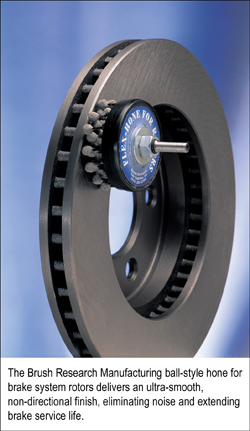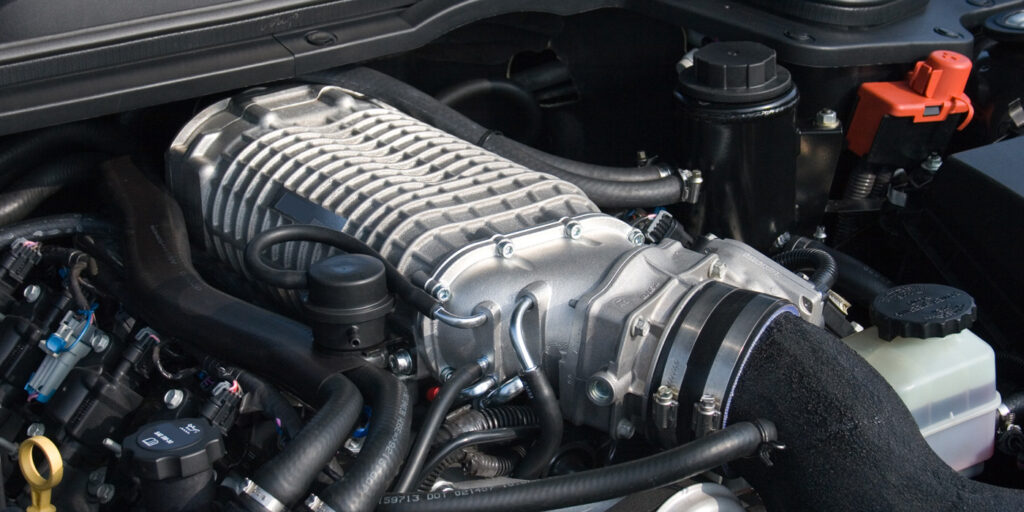 A few years ago, when Miller Industrial Products (Jackson, MI) got an order to make brake drums for Cadillac stretch limousines, they knew from the get-go that quality and performance were critical issues. The big limos were the heavyweights of passenger cars, and required the support of much beefier axles.
A few years ago, when Miller Industrial Products (Jackson, MI) got an order to make brake drums for Cadillac stretch limousines, they knew from the get-go that quality and performance were critical issues. The big limos were the heavyweights of passenger cars, and required the support of much beefier axles.
“These stretch limos were not only much larger than standard models in overall size, but also featured bullet-proof windows and doors plus a heavy-duty undercarriage,” says owner Bill Miller. “Therefore, the brake system required the size of brake drums used on trucks. But at the same time, since these were ultra-luxury vehicles, the brakes had to be quiet — and that was a new challenge.”
Miller, a specialist in brake systems, explains that previously drum-brake systems used asbestos-lined shoes that were inherently much quieter than new ones. Since asbestos has been outlawed, new brakes — whether drum or disk styles — tended to be noisy if the hard metal finishes were not finished perfectly smooth.
“That is more difficult to accomplish than many people thought at the time,” Miller explains. “Any irregularities in the surface of the drums would cause a squeal, hum or slapping noise that was unacceptable to the OEM, which was very understandable.”
Miller says what was needed was a unique honing process to give the brake drums an ultra-smooth finish. To accomplish this, he turned to Brush Research Manufacturing (BRM) in Los Angeles, a manufacturer of power brushes, hones and other finishing tools.
“BRM has a history of solving finishing problems, and makes a ball-style honing tool, the Flex-Hone that allows you to achieve a very smooth finish,” says Miller. So we looked at this honing tool and developed a special process to machine the brake drums and then hone them in such a way that they were completely silent. And it worked so well that the engineers at Cadillac were amazed.”
The Flex-Hone is a highly versatile tool used throughout industry where metal machining is involved. This ball-style hone is recognizable by the abrasive globules, sometimes called “dingle berries,” mounted to nylon filaments. Known widely as a tool used for de-burring, plateau honing and deglazing, this is an inexpensive yet sophisticated device. A precision-quality ball-style hone not only de-burrs bored metal, but can easily remove even microscopic metal shards and fragments.
BRM makes a special line of these ball-type hones for use on brake system rotors. Manufacturers, rebuilders and service shops say that the Flex-Hone for Rotors produces a superior final finish that gets rid of harmonic vibrations. The same tool may also be used on flywheels to remove torn, cut and folded metal fragments.
All Star Brake and Muffler, Conroe, TX, is a full service repair shop that uses the ball-style hone for rotors. “We use it to put a non-directional surface finish on all the disk brake rotors we service,” says manager Jason Deming. “This finish prevents squeals and other noise in a brake system.”
Deming says that if it were not for the ball-style hone, his shop would have to use a less efficient type of tool, such as sanding disks. “The Flex-Hone is easier to use and puts a better finish on the rotor,” he says. “And that finish also makes it last longer.”
Miller agrees. He adds that the ball-style hone has led to increased business since the days of the Cadillac limo order. “We’re in a very competitive industry and it’s always 9-1-1 on turnaround,” he says. “A lot of customers come to us because they hear we’ve got the ability to turn a project around quickly. So we’ve used the BRM tool and even developed new models with their engineers to modify and streamline processes that have really impressed our customers, and have led to new ones.”
Miller explains that when it came to producing new rotors, he designed and built some machinery that expedited production by finishing both braking surfaces simultaneously. And through all of this development he worked very closely with Brush Research.
“For this and various other projects I kept letting them know what our needs were,” Miller says. “So we put our heads together and came up with custom solutions. In one case, for example, we made a much larger hub and shorter nylon filaments on the Flex-Hone than was previously available. The filaments still had a lot of flex, but were even stronger than the longer version. And we incorporated smaller abrasive globules. These design changes allowed us to apply much more power and pressure to the tool, which sped-up production while still maintaining a perfectly smooth finish.”
Miller says that, due to machining, slight flaws and resulting noise are almost unavoidable when making rotors, unless the correct finishing techniques are used.
“When you turn a metal piece on a lathe you always create a ‘tool lead’ groove in the metal,” he explains. “That is because you’re cutting it with a single-point tool, and as the parts revolve and the tool feeds in the metal, it leaves a slight groove in the product you’re working on. Many brake specialists have found that this groove creates noise unless it is polished off by honing. You can try slowing the speed down and accelerating the RPM, and that may minimize the tool lead. But unless you eliminate the groove and create a surface that is very smooth and non-directional, you are still likely to get noise, and also brake wear-life may be lessened.”
The Flex-Hone is a lightweight and portable tool, making it adaptable to many different processes and setups. The tool can be chucked easily into a variable-speed electric drill motor or low-speed air drill. In the case of Miller Industrial Products, this flexibility has led to considerable added work contracts.
“We’ve also showed our use of the hone to other companies and even built machines for them to use for their own projects,” Miller says.
Established in 1958, Brush Research Manufacturing has been solving difficult finishing problems with brushing technology in the sophisticated environments of nuclear energy, aerospace and computer technology as well as automotive and industrial applications.
For more information, contact Brush Research Manufacturing, Brush Research Mfg. Co., Inc., 4642 East Floral Drive, Los Angeles, CA 90022; Phone: (323) 261-2193; Fax: (323) 268-6587; email: [email protected] or visit the website: www.brushresearch.com.











